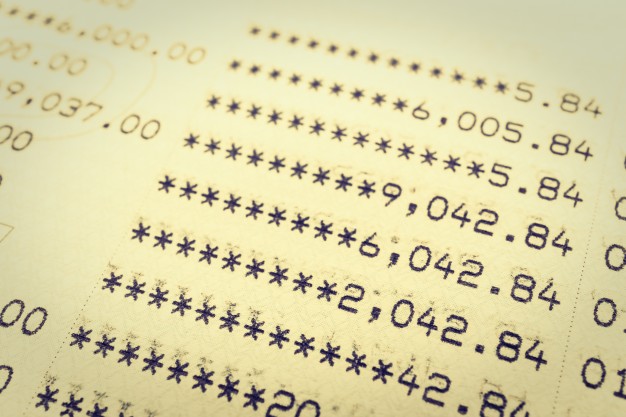India is becoming a popular destination for companies to outsource most of their business. And this is all due to the fact that the average salary in India is around $400.
If that’s something that you’re thinking of, then it’s important to consider implementing a paystub system. In this article, that’s exactly what we’ll talk about.
So if you’re interested in that, make sure to stick around. With all that said, let’s start.
Table of Contents
1. What Is A Pay Stub?

Source: freepik.com
First things first, let’s talk about what exactly a paystub is. For the entrepreneurial spirits or those that like to know more about it, a paystub is a financial document that outlines much of your employee’s financials.
It is a document that helps employers keep tabs on finances by allowing them to keep track of such information. These documents help with payroll compliance, visibility, and of course, accounting.
While they aren’t mandatory in India, they are in much of the western world. But what these documents so important for both employees and employers? Let’s look at that.
2. Why Are They Important

Source: freepik.com
A real pay stub is important for several reasons. First off, it contains employee details and everything surrounding that. It is a document that allows you to see how much an employee earns. And the employee can also use this document for the very same reason. A real paystub maintains transparency among both employer and employee, and you can use it for this very reason if thinking of opening a business or outsourcing in India.
Another reason why this document is important is that it helps the employee in numerous ways. In the United States, a real paystub is considered a valid document that can be used as proof of income. With this document employees can go to the bank and apply for a loan, using the document as a way of proving that they do indeed have a job. More so, the employees know exactly how much they earn and what leads to them earning that amount.
Since a real paystub includes stuff like net pay and gross wage, the employee will know exactly how much of their pay is deducted and for what reasons.
So with all that said, how do you make one?
3. Creating A Pay Stub

Source: freepik.com
You can easily create one using a free paystub generator. There are plenty available online and you can choose the one that most suits your needs.
But it’s important to distinguish the real from the fake ones. Real paystubs will include information such as gross wage, deductions, taxes, personal information, contributions, and net pay. If you’re looking for a free paystub generator that will help you create such documents and easily distribute them to employees, make sure to visit this website.
4. What Information Is On A Pay Stub?

Source: freepik.com
Real paystubs will contain plenty of information. At the very top of this document are the employee’s details. This section contains the name of the employee, street address, and ID number. While we won’t explain this section, we will explain the other sections in greater detail. So let’s do that.
- Pay Period
The pay period contains the beginning and end of the salary cycle. This can be on a bi-weekly or monthly cycle, or hourly. This section simply states how many hours the employee has worked since the last and current real paystub has been issued.
- Gross Wage
The gross wage section simply states how much the employee earns or has earned. This is the full amount the employer pays the employee before any deductions. You shouldn’t confuse this section with how much you earn as every company pays taxes and you don’t get that amount.
If you’re interested in how much you really earn, you will need to see the Net Pay section.
- Deductions
This is where things get trickier. Accountants know exactly how much they need to deduct from an employee’s gross wage. Some of the types of deductions include taxes but they are oftentimes shown in a different section. Most types of deductions include insurance such as medical insurance, etc.
- Taxes
Taxes have their own section on a real paystub document. That’s because employers pay the most in taxes, and this is where most of the deductibles go towards. By looking at one such document, you will be shown exactly what sort of taxes your employer pays. In India, the tax system works differently. Namely, employers don’t have to pay any taxes on the first 250,000 rupees an employee makes in a year. That number in US dollars is somewhere around $3,000. You will get deducted 5% for each subsequent 250,000 rupees earned yearly. But if you make well over 1,500,000 rupees or $19,000 then you will be taxed 30%.
While there are other deductions such as social security, they will be displayed in the corresponded section.
- Contributions
Contributions are sort of like deductions but they come from your own pocket instead of the employer. While the employer can make these contributions for the employee, they will still be displayed in the contributions sections.
In India, contributions include stuff like social security. In India, employees contribute 12% of their salary, and so do foreign nationals working in the country.
Depending on what sort of benefits the employer provides its employees, these will also go in this section. These opportunities or benefits can be in the form of employee stocks.
- Net Pay
And finally, we have the Net Pay section. A real pay stub will show this section as this is the section that most employees mostly care about. It shows you how much money you earn after all the deductions and taxes have been deducted from the gross wage.
This is the salary each employee takes home. By simply looking at it, you might feel that it is significantly lower than what the gross wage says. But a real paystub will include all relevant information and exactly how much money is been deducted from the gross wage.

